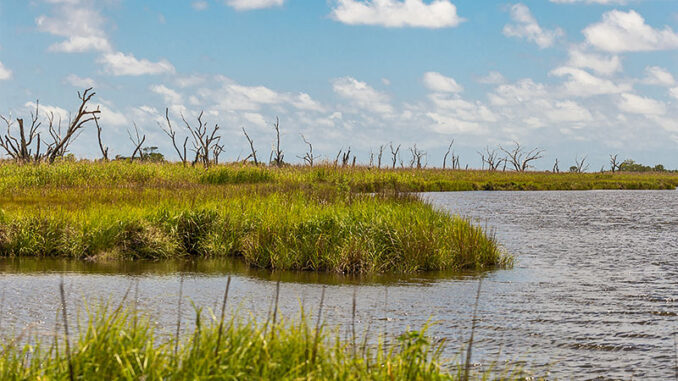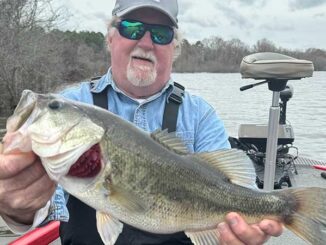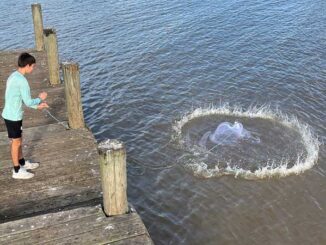
Us city-raised guys never had much of a chance to ride a horse.
Yeah, did it a couple of times, but my friend Ray’s black souped-up Chevy was more to my liking.
So, when my country-raised buddies talk about having a burr under their saddle, well, it’s something that doesn’t invoke much response. Except, folks my age (and I ain’t telling just yet) grew up on Roy Rogers, Hopalong Cassidy and Gene Autry on TV and John Wayne on the big screen.
And, when one of them talked about having a burr under their saddle, we darned well knew that it meant bad news for the bad guys.
All that leads to this: A friend, a close friend and a conservationist, said he had a burr under his saddle. Like me, he grew up with those Hollywood cowboys, but he was raised in the country, so I sorta believed he knew what that meant.
We talked, and one thing led to another, and another.
It began with his first burr, the one about all the hubbub over the diversion project for the Barataria Basin. It went something like this.
Do they understand?
Him: “Do these politicians understand that the ground we live on in most of Louisiana came from the Mississippi River?”
Me: Don’t believe they do.
Him: “And when we cut all that area off from the Mississippi, what does that lead to? Erosion, subsidence, degradation of the lands built by thousands of spring floodwaters depositing sediment across our coast. It’s taken a little more than a hundred years to erase what we old folks knew was our coastal marshes.
“What’s more, don’t these folks look at the Atchafalaya (River) delta to understand what a river can do to enhance wetlands?
“This delta is one of the few building deltas on our world, and a few folks worried about oysters and shrimp and the decreasing numbers of redfish and speckled trout in Barataria have the ears of those who would stop a project that could begin building lands in a land-starved basin.”
Me: You know Barataria has been the main data-collecting area for brown shrimp, reds and trout for decades. Brown shrimp numbers have been in decline for years, and some folks are worried freshwater from a Mississippi diversion is going to continue that decline.
That’s what I don’t understand. How can a diversion hurt what already has been hurt by declining marshes and the edge effect marshes give for all marine species that thrive on these estuaries?
Yeah, I’ve sat in on enough Wildlife and Fisheries Commission shrimp-season-setting meetings to understand the 10-parts-per-thousand salt content, water temperature gradients and cold fronts that make up brown shrimp growth-to-harvest data. Just wonder sometimes if adding freshwater to the upper part of this basin wouldn’t help hold back that saltwater push into this basin and, possibly, help and not hurt.
It’s been too much
Him: “Look, I don’t know enough about the 10-parts thing to comment. All I know is we don’t see the marine life we saw 5, 10, 20 and most assuredly 30 years ago in this basin, and it’s because we’ve lost marsh, and we need to rebuild it the same way God built it for us.
“We cut off Bayou Lafourche from the Mississippi and it looks like that hurt. We cut off Bayou Manchac from the Mississippi and it looks like that hurt, too. We built levees to hold the river south of New Orleans and built spillways to avoid what happened during the 1927 flood. That hurt, too, and we’re paying the price for that now along with the jetties at the mouth of Southwest Pass (on the Mississippi River).
“It’s just been too much.”
Me: Another cup of coffee?
Him: “Yeah, and there’s something else. “April 15.”
Me: Tax day?
Him: Nope. Red snapper season opened and we finally got a full season of four snapper per day.
“But, so did the menhaden season (open), and I’m wondering how much attention Wildlife and Fisheries is going to pay attention to the half-mile restriction for commercial pogey (menhaden) operations.”
Me: It’s a new restriction, and we’re going to have to wait to see how the department reacts to the pressure conservation groups put on newly elected officials and the department when it comes to making sure the pogey boats stay a half-mile outside the inside-outside line.
It’s going to be a challenge for all concerned. From all indications, it was our new governor who ordered the user groups to agree to the half-mile, no-fishing zone. We just have to wait and see how much this new barrier will be enforced. Anything else?
Him: “Got a couple more burrs to deal with, but the wife’s a home waiting for me to take her shopping. And, that’s a burr, too, but not like these.
Ah, the things we do for love!”


